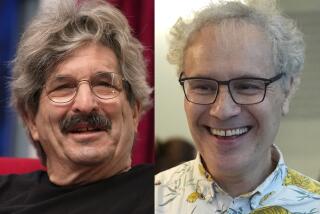Amgen, Phone Entrepreneur Win Medal of Technology
- Share via
WASHINGTON — Southern California biotechnology innovator Amgen Inc. and San Diego cellular telephone entrepreneur Irwin M. Jacobs are among six winners of this year’s National Medal of Technology, the Clinton Administration announced this week.
Thousand Oaks-based Amgen is one of only five companies ever to receive the prestigious award, which generally goes to individuals. The firm was recognized for developing biologically engineered medicines that have improved the quality of life of many cancer and kidney patients.
Jacobs, a prolific inventor who holds six key patents, has spent 25 years developing wireless communications technology. In recent years, he has focused primarily on cellular telephones. Jacobs is chairman and chief executive of a San Diego communications company, Qualcomm Inc.
The medal, first issued in 1985, is the nation’s highest technology award.
Other 1994 recipients include Corning Inc., the New York-based manufacturer known primarily for its glassware. Commerce Secretary Ronald H. Brown, who announced the awards, said Corning was cited for innovations spanning 125 years, including lighting, TV and optical communications products.
H. Joseph Gerber, founder of Gerber Scientific Inc. in Connecticut, will receive a medal for his work in automating a variety of industries, particularly apparel manufacturing. Medals will also be given to Joel S. Engel of Ameritech Corp. and Richard H. Frenkiel of AT&T; Bell Laboratories, who were jointly recognized for their work in cellular mobile communications.
Amgen, founded just 14 years ago, has become the largest independent biotechnology company in the world, with $1.4 billion in annual sales. Its primary products are Epogen, which treats severe anemia in kidney dialysis patients, and Neupogen, which is administered to cancer patients undergoing certain types of chemotherapy.
Jacobs was honored for adapting a technology, once reserved for secure military and satellite use, to the needs of commercial wireless communications. Known as code division multiple access technology, it became the industry standard for digital cellular telephone services in this country, enabling cellular networks to handle up to 20 times more calls than they could with previous technologies.
More to Read
Inside the business of entertainment
The Wide Shot brings you news, analysis and insights on everything from streaming wars to production — and what it all means for the future.
You may occasionally receive promotional content from the Los Angeles Times.








